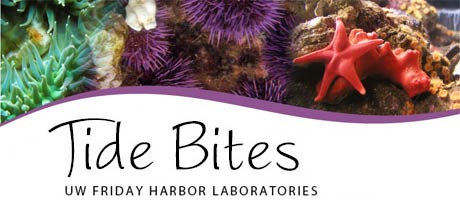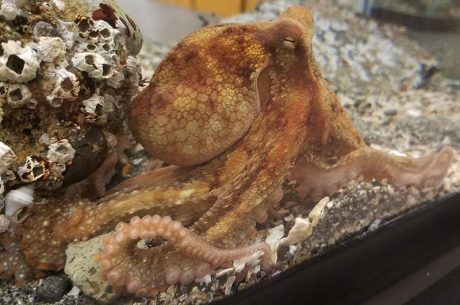Curious Minds
Posted December 7, 2021 at 5:46 am by Tim Dustrude

This article written by Dominic Sivitilli…
The lab was buzzing with excitement when I arrived. A few weeks into the summer term, the water tables of Lab 3 were teeming with invertebrate life. All varieties of morphology and behavior were on display for our class to study. But something was different today: the lab had a new arrival. I was an undergraduate on my first visit to FHL in the summer of 2013. While my focus at the time was animal behavior, my experience with invertebrates was limited. I took the opportunity to delve into invertebrate diversity by enrolling in Marine Invertebrate Zoology.
Shaped timidly into the corner of a critter container was a Pacific red octopus (Figure 1). There she waited, immobile but for a slight bob of her head, as she cautiously eyed those of us peering down at her. When the activity of the lab died down, she carefully felt her way around with her long, flexible arms. Her body rapidly shifted color when she was alerted to movement. She appeared to become interested in activity happening around her, but remained cautious.
You can support the San Juan Update by doing business with our loyal advertisers, and by making a one-time contribution or a recurring donation.











No comments yet. Be the first!
By submitting a comment you grant the San Juan Update a perpetual license to reproduce your words and name/web site in attribution. Inappropriate, irrelevant and contentious comments may not be published at an admin's discretion. Your email is used for verification purposes only, it will never be shared.